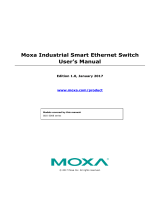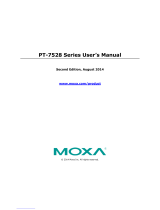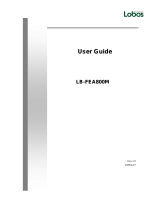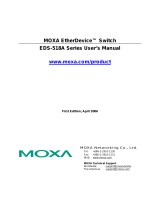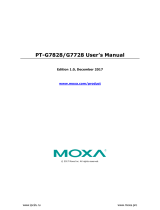
Table of Contents
1. About this Manual ............................................................................................................................. 1-1
2. Getting Started.................................................................................................................................. 2-1
USB Console Configuration (115200, None, 8, 1, VT100) ......................................................................... 2-2
Configuration by Command Line Interface (CLI) ..................................................................................... 2-5
Configuration by Web Browser ............................................................................................................. 2-6
Disabling Telnet and Browser Access ..................................................................................................... 2-8
3. Featured Functions ........................................................................................................................... 3-1
Home ................................................................................................................................................ 3-2
System Settings ................................................................................................................................. 3-2
System Information ..................................................................................................................... 3-2
User Account .............................................................................................................................. 3-3
Network ..................................................................................................................................... 3-5
Date and Time ............................................................................................................................ 3-7
IEEE 1588 PTP ............................................................................................................................ 3-8
Warning Notification .................................................................................................................. 3-12
MAC Address Table .................................................................................................................... 3-17
System Files ............................................................................................................................. 3-18
Turbo Ring DIP Switch ............................................................................................................... 3-21
Restart ..................................................................................................................................... 3-22
Factory Default ......................................................................................................................... 3-22
PoE (PoE Models Only) ...................................................................................................................... 3-22
PoE Settings ............................................................................................................................. 3-23
VLAN ............................................................................................................................................... 3-33
The Virtual LAN (VLAN) Concept .................................................................................................. 3-33
Sample Applications of VLANs Using Moxa Switches ....................................................................... 3-35
Configuring a Virtual LAN ........................................................................................................... 3-36
QinQ Settings ........................................................................................................................... 3-38
VLAN Table ............................................................................................................................... 3-39
Port ................................................................................................................................................ 3-40
Port Settings ............................................................................................................................. 3-40
Port Status ............................................................................................................................... 3-41
Link Aggregation ....................................................................................................................... 3-41
Link-Swap Fast Recovery ........................................................................................................... 3-43
Multicast .......................................................................................................................................... 3-44
The Concept of Multicast Filtering ................................................................................................ 3-44
IGMP Snooping ......................................................................................................................... 3-47
IGMP Snooping Setting .............................................................................................................. 3-47
IGMP Group Status .................................................................................................................... 3-48
Stream Table ............................................................................................................................ 3-49
Static Multicast Address ............................................................................................................. 3-49
GMRP ....................................................................................................................................... 3-50
QoS ................................................................................................................................................ 3-50
The Traffic Prioritization Concept ................................................................................................. 3-51
Configuring Traffic Prioritization .................................................................................................. 3-52
CoS Classification ...................................................................................................................... 3-53
CoS Mapping (Types 1 and 2) ..................................................................................................... 3-56
CoS Mapping (Type 3-1) ............................................................................................................ 3-56
CoS Mapping (Type 3-2) ............................................................................................................ 3-57
DSCP Mapping (Types 1 and 2) ................................................................................................... 3-57
DSCP Mapping (Type 3) ............................................................................................................. 3-58
Rate Limiting ............................................................................................................................ 3-58
Security ........................................................................................................................................... 3-65
Login Authentication .................................................................................................................. 3-65
Management Interface ............................................................................................................... 3-66
Trusted Access .......................................................................................................................... 3-66
Authentication Certificate ........................................................................................................... 3-67
IEEE 802.1X ............................................................................................................................. 3-67
IEEE 802.1X Setting .................................................................................................................. 3-68
Local Database ......................................................................................................................... 3-69
RADIUS Server Settings ............................................................................................................. 3-70
Port Security ............................................................................................................................. 3-70
Port Access Control Table ........................................................................................................... 3-71
Broadcast Storm Protection ........................................................................................................ 3-71
Loop Protection ......................................................................................................................... 3-72
DHCP .............................................................................................................................................. 3-72
IP-Port Binding.......................................................................................................................... 3-72
DHCP Relay Agent ..................................................................................................................... 3-72
SNMP .............................................................................................................................................. 3-75




















